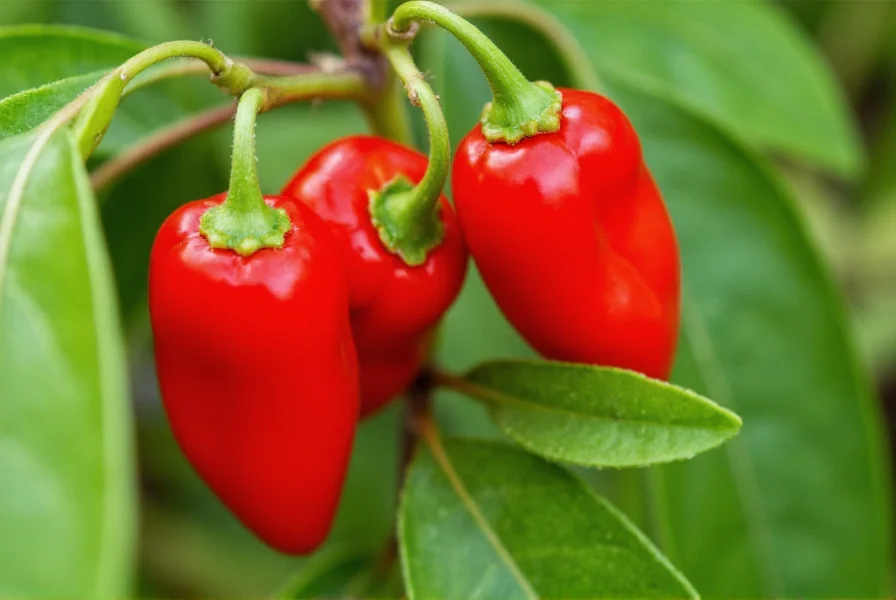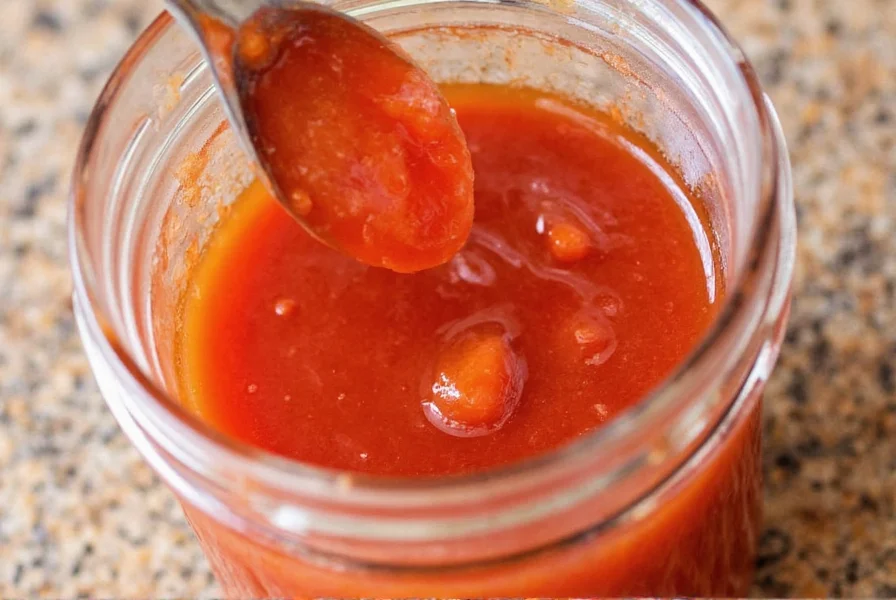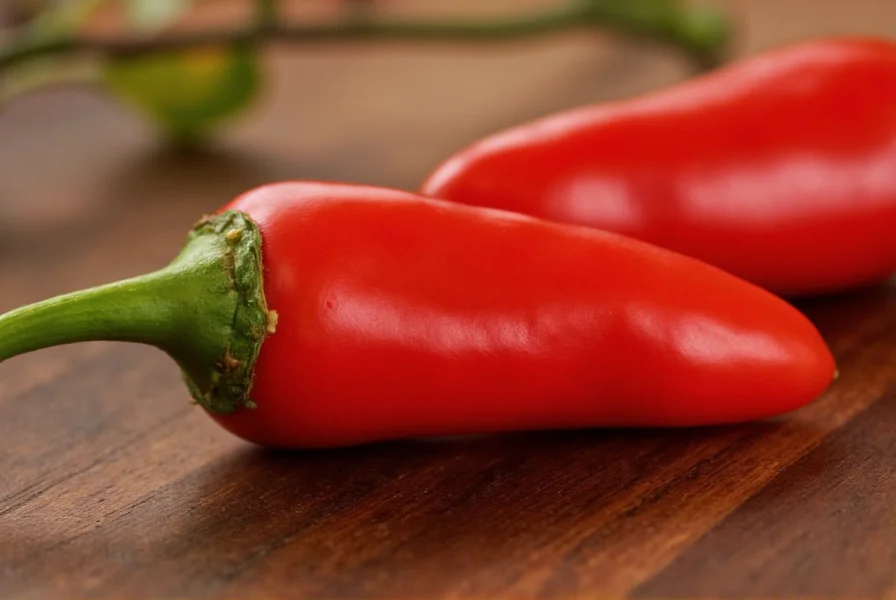When exploring how hot is a tabasco pepper, understanding its precise heat level helps home cooks and gardening enthusiasts make informed decisions. These Capsicum frutescens varieties deliver a sharp, immediate heat that builds quickly but doesn't linger as long as some hotter peppers. The distinctive flavor profile combines tropical fruit notes with a clean, bright spiciness that enhances rather than overwhelms dishes.
Tabasco Pepper Characteristics and Identification
Measuring 1.5 to 2.5 inches long with a smooth, glossy skin, Tabasco peppers transition from green to vibrant red as they mature. Their thin walls make them ideal for drying or processing into sauces but less suitable for stuffing compared to thicker-walled varieties like bell peppers. The plant itself grows as a compact bush reaching 3-4 feet tall, producing abundant small peppers throughout the growing season.
Understanding tabasco pepper scoville units places them firmly in the medium-hot category. At 30,000-50,000 SHU, they're approximately 8-15 times hotter than jalapeños (2,500-8,000 SHU) but significantly milder than habaneros (100,000-350,000 SHU). This heat level makes them versatile for adding noticeable spice without overwhelming diners who prefer moderate heat.

Historical Background and Naming
Despite the name connection, Tabasco peppers originated in Central America and Mexico, not specifically in the Mexican state of Tabasco. The association comes from the McIlhenny Company, which began producing Tabasco sauce in 1868 usingscrição peppers grown on Avery Island, Louisiana. The company named their product after the Mexican state, creating the enduring but somewhat misleading geographical connection.
Many people confuse tabasco sauce vs tabasco peppers, but they're distinct products. The commercial sauce uses only three ingredients:scriptId peppers, vinegar, and salt, aged for up to three years in whiskey barrels. Fresh Tabasco peppers offer a brighter, fruitier flavor profile compared to the fermented, vinegar-forward taste of the bottled sauce.
Growing Tabasco Peppers Successfully
For gardeners interested in growing tabasco peppers at home, these plants require warm temperatures (70-85°F), full sun, and well-draining soil. They're particularly sensitive to cold, with growth stalling below 60°F. Starting seeds indoors 8-10 weeks before the last frost date gives the best results, as Tabasco peppers need 80-100 days to reach maturity.
Proper tabasco pepper plant care involves consistent watering without waterlogging, regular feeding with balanced fertilizer, and providing support as the branches become heavy with fruit. Unlike some chili varieties, Tabasco peppers thrive in containers, making them suitable for patio gardening in cooler climates.
| Pepper Variety | Scoville Heat Units | Flavor Profile | Common Uses |
|---|---|---|---|
| Tabasco | 30,000-50,000 | Fruity, citrusy, sharp heat | Sauces, hot sauces, pickling |
| Cayenne | 30,000-50,000 | Earthy, slightly smoky | Drying, powders, Cajun cuisine |
| Habanero | 100,000-350,000 | Tropical fruit, floral | Extreme heat sauces, Caribbean dishes |
| Jalapeño | 2,500-8,000 | Grassy, bright | Stuffed peppers, salsas, nachos |
Culinary Applications and Flavor Pairings
Chefs value Tabasco peppers for tabasco pepper uses in cooking that benefit from their distinctive heat and flavor. They work exceptionally well in seafood dishes, where their citrus notes complement fish and shellfish. The thin walls make them perfect for quick-pickling or blending into fresh hot sauces without creating fibrous textures.
When substituting in recipes, understanding tabasco pepper vs cayenne differences matters. While both measure similarly on the Scoville scale, Tabasco peppers offer brighter, fruitier heat while cayenne provides earthier, more persistent spice. For most recipes, use half the amount of cayenne when substituting for Tabasco peppers due to cayenne's more concentrated heat.
Home cooks exploring fresh tabasco pepper recipes should try them in mango salsa, shrimp ceviche, or blended with citrus juices for a quick finishing sauce. Their relatively moderate heat level makes them accessible for those building tolerance to spicier foods while still providing noticeable kick.

Storage and Preservation Methods
Preserving the harvest requires understanding proper techniques for tabasco pepper storage. Fresh peppers last 1-2 weeks in the refrigerator's crisper drawer. For longer storage, freeze whole peppers on a baking sheet before transferring to freezer bags—they'll remain usable for 6-8 months without significant flavor loss.
The traditional method for preserving Tabasco peppers involves creating a mash with vinegar and salt, then aging in barrels—a process that develops complex flavors over time. Home preservers can achieve similar results by packing clean peppers in vinegar with 3% salt concentration and storing in a cool, dark place for 4-6 weeks before blending and straining.
Nutritional Benefits and Safety Considerations
Like other chili peppers, Tabasco varieties contain capsaicin, which has been studied for potential metabolic and pain-relief benefits. They're rich in vitamin C (more than oranges by weight) and vitamin A. The heat sensation triggers endorphin release, creating the well-known "chili high" that many enthusiasts enjoy.
When handling extremely hot peppers, always wear gloves and avoid touching your face. The capsaicin in Tabasco peppers can cause significant irritation to eyes and sensitive skin. If you experience burning, dairy products like milk or yogurt provide more effective relief than water due to capsaicin's fat solubility.
Frequently Asked Questions
How hot is a Tabasco pepper compared to other common peppers?
Tabasco peppers measure 30,000-50,000 Scoville Heat Units, making them approximately 8-15 times hotter than jalapeños but significantly milder than habaneros. They share similar heat levels with cayenne peppers, though Tabasco peppers have a brighter, fruitier flavor profile compared to cayenne's earthier taste.
Can I grow Tabasco peppers in containers?
Yes, Tabasco peppers grow exceptionally well in containers due to their compact bush habit (typically 3-4 feet tall). Use a 5-gallon container with drainage holes, quality potting mix, and place in full sun. Container-grown plants require more frequent watering and feeding but offer the advantage of mobility to protect from temperature extremes.
What's the difference between Tabasco peppers and Tabasco sauce?
Tabasco peppers are the fresh chili variety used to make Tabasco sauce, but they're not identical. Commercial Tabasco sauce uses only three ingredients:scriptId peppers, vinegar, and salt, aged for up to three years in whiskey barrels. Fresh Tabasco peppers have a brighter, fruitier flavor, while the sauce develops complex, fermented notes from the aging process.
How do I substitute Tabasco peppers if I can't find them?
Good substitutes include cayenne peppers (use half the amount due to more concentrated heat), serranos (milder option), or a combination of jalapeños with a few drops of vinegar to mimic the bright flavor. For sauce applications, consider using malagueta peppers which share similar heat and flavor characteristics.
How long does it take for Tabasco peppers to mature from seed?
Tabasco peppers require 80-100 days to reach maturity from seed under optimal conditions. Start seeds indoors 8-10 weeks before your last expected frost date, as they need warm soil (70-85°F) for germination. The plants typically begin flowering 6-8 weeks after transplanting outdoors, with peppers maturing from green to red over several weeks.











 浙公网安备
33010002000092号
浙公网安备
33010002000092号 浙B2-20120091-4
浙B2-20120091-4